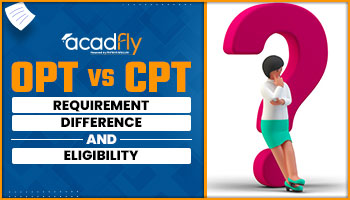

SAT Exam Format and Structure: The SAT is a standardized test widely used for college admissions in the United States and other countries. Understanding the SAT Exam Format and Structure is crucial for students aiming to excel in this test. Whether you plan to study abroad or study in Australia, knowing the specifics of the SAT will help you prepare effectively.
This comprehensive guide will provide an in-depth look at the SAT exam format, including the different sections, their content, and the scoring system. Additionally, we'll discuss how AcadFly can support your SAT preparation journey.
Overview of the SAT Exam
The SAT exam is designed to assess a student's readiness for college. It evaluates critical reading, writing, and mathematical skills. The test consists of four main sections: Evidence-Based Reading, Writing and Language, Math (No Calculator), and Math (Calculator). There is also an optional Essay section.
| SAT Exam Structure | ||
|
Section |
Number of Questions |
Time Allotted |
|
Evidence-Based Reading |
52 |
65 minutes |
|
Writing and Language |
44 |
35 minutes |
|
Math (No Calculator) |
20 |
25 minutes |
|
Math (Calculator) |
38 |
55 minutes |
|
Optional Essay |
1 |
50 minutes |
Evidence-Based Reading Section
Content and Skills Assessed
The Evidence-Based Reading section consists of five passages from literature, historical documents, social sciences, and natural sciences. It tests your ability to understand and analyze texts, identify main ideas, and interpret words in context. The section includes multiple-choice questions based on these passages.
Strategies for Success
To excel in this section, practice active reading by underlining key points, summarizing paragraphs, and noting important details. Familiarize yourself with different passage types and enhance your vocabulary skills to improve comprehension.
Writing and Language Section
Content and Skills Assessed
The Writing and Language section includes four passages that require editing and revision. The questions focus on grammar, punctuation, sentence structure, and overall coherence. This section tests your ability to improve the clarity and effectiveness of written text.
Strategies for Success
Master grammar and punctuation rules, practice combining sentences for clarity, and ensure logical flow in your writing. Regular practice with SAT-specific materials will help you identify and correct common errors.
Math Section
The Math section is divided into two parts: one that allows the use of a calculator and one that does not. It covers a wide range of mathematical concepts, including algebra, geometry, trigonometry, and data analysis.
Math (No Calculator)
Content and Skills Assessed
The No Calculator section tests your ability to perform basic arithmetic and algebraic operations without a calculator. It includes 20 questions, with a mix of multiple-choice and grid-in responses.
Strategies for Success
Practice mental math and familiarize yourself with algebraic manipulations and geometric concepts. Focus on improving your problem-solving speed and accuracy.
Math (Calculator)
Content and Skills Assessed
The Calculator section includes 38 questions that assess more complex mathematical concepts. You can use a calculator for this part, which involves problem-solving, data analysis, and advanced math topics.
Strategies for Success
Practice using your calculator efficiently and accurately. Work on complex problem-solving skills and understand how to interpret and analyze data.
|
Math Section Breakdown |
|||
|
Section |
Number of Questions |
Time Allotted |
Calculator Allowed |
|
Math (No Calculator) |
20 |
25 minutes |
No |
|
Math (Calculator) |
38 |
55 minutes |
Yes |
Optional Essay
Content and Skills Assessed
The optional Essay section requires you to read a passage and analyze how the author builds an argument. You need to write a coherent and well-structured essay that discusses the rhetorical techniques used in the passage.
Strategies for Success
Practice reading and analyzing argumentative texts. Develop your essay-writing skills by organizing your thoughts clearly, using evidence effectively, and maintaining a logical flow.
Scoring System
The SAT is scored on a scale of 400 to 1600. The Evidence-Based Reading and Writing sections are combined and scored between 200 and 800, as is the Math section. The optional Essay is scored separately on a scale of 6 to 24.
|
SAT Scoring Breakdown |
|
|
Section |
Score Range |
|
Evidence-Based Reading and Writing |
200-800 |
|
Math |
200-800 |
|
Total |
400-1600 |
|
Optional Essay |
6-24 |
How AcadFly Can Help with SAT Preparation?
AcadFly offers comprehensive support for students preparing for the SAT. Here’s how AcadFly can assist you:
Customized Study Plans
AcadFly provides personalized study plans tailored to your strengths and weaknesses, ensuring efficient and effective preparation for each section of the SAT.
Expert Tutoring
AcadFly’s experienced tutors offer one-on-one coaching, helping you understand complex reading, writing, and math concepts and develop test-taking strategies.
Extensive Practice Materials
AcadFly offers a wide range of practice materials, including mock tests, practice questions, and interactive exercises, simulating the actual exam environment.
Regular Progress Tracking
AcadFly tracks your progress regularly, providing detailed feedback and suggestions for improvement, keeping you on track to achieve your target score.
Conclusion
Understanding the SAT Exam Format and Structure is essential for effective preparation. By knowing the specifics of each section and employing targeted strategies, you can significantly improve your scores. Regular practice, combined with focused study and analysis, will help you achieve your academic goals. For personalized guidance and comprehensive support in your preparation journey, AcadFly offers expert assistance to help you succeed in your SAT exam and beyond.
Frequently Asked Questions
1. What is the structure of the SAT exam?
2. How is the SAT scored?
3. What strategies can help improve SAT Reading and Writing scores?
4. How can practice tests help with SAT preparation?
5. How can AcadFly assist with SAT preparation?









